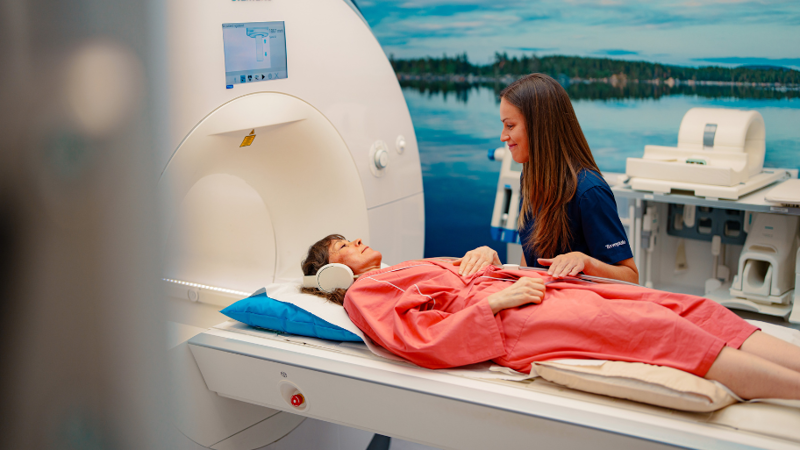Näin Suomi voi survey 2022: The number of sickness absences increased significantly and they affected an increasing number of employers
According to Terveystalo's data, morbidity among working-age people increased considerably when comparing the year 2022 with the statistics from 2021. More and more workplaces were affected by the prevalence of various illnesses as the flu epidemic at the end of the year was exceptionally strong and the contrast with illness rates during the COVID years was high. Absences related to mental health issues and musculoskeletal disorders were on a downward trend, but the change cannot be considered a purely positive one.

Infectious diseases on a rapid rise
In terms of infection-related absences, the difference between 2021 and 2022 is as high as 82%, but in order to ensure comparability, Terveystalo's data also includes materials from the years preceding the COVID-19 pandemic.
In terms of respiratory infections, 2022 started at a slightly higher level than 2021, but compared to the time before the COVID-19 pandemic, the early part of 2022 saw a clearly lower level of respiratory infections. Similarly, from May to December 2022, the number of sickness absences due to respiratory infections was very close to the same level as in 2017–2019. By contrast, December 2022 saw clearly the highest level in all years of follow-up, as the number of absences due to infections was up to 42% higher than in December of the so-called normal year of 2019.
“In the COVID years of 2020 and 2021, due to restrictions related to the pandemic, the number of absences related to infections was moderate, which is why employers had already gotten used to a certain level of illnesses. The circulation of numerous flu viruses during the fall and the rest of the year also caused an explosive increase in absences, which certainly posed challenges to work arrangements in numerous organizations,” says Chief Physician Jukka Pitkänen from Terveystalo’s occupational healthcare services.
Brief, self-reported sickness absences (1–10 days) also increased in 2022. These are recorded by Terveystalo under the category Other, which grew by 61% in 2022.
“With the COVID-19 pandemic, several of our customer organizations introduced a self-reporting model that brings flexibility to the work and reflects trust in the employees. It is in everyone's interest to use this practice; for the employer and the employee, this saves time, effort and money, and it also reduces the misuse of healthcare resources and helps better allocate the professionals' time,” Pitkänen adds.
Mental health-related absences reflect efforts to cope
Mental health-related absences have been a topic of interest for several years as their number has increased throughout the 2000s. According to the statistics of Terveystalo, the trend continued unchanged in early 2022 and mental health absences remained higher than in 2021.
“The war in Ukraine shook our sense of security, as expected, and aroused concern, which was especially evident in the reasons for contacting the low-threshold services and in appointments in the early spring. The new crisis partially overlapped with the pandemic, both of these causing psychological stress. We didn't get to go back to normal life as we had hoped; once again, we had to find ways to adjust and remain strong,” says Tuija Turunen, Terveystalo's Chief Psychologist.
Looking at the entire year of 2022, however, there was a clear dip in absences in the autumn, and the number of mental health-related sickness absences was, ultimately, 5% lower than in 2021.
“No matter how much we want to believe that people just genuinely started to feel better, the dip is probably more about their efforts to cope, a phenomenon that became familiar during the recession of the 1990s. When there’s a threat hanging over our heads and it starts to affect our daily lives, we turn inward and focus on coping with our basic everyday life,” Turunen says.
“The consequences of the war can also be seen in the everyday lives of Finns: inflation, rising mortgage interest rates, energy shortages, future prospects for employment... All of these affect our personal lives. If you are worried about your livelihood, you may not have the courage to acknowledge that you’re struggling to cope and you simply try to persevere at work,” Turunen continues.
Terveystalo's data shows that, proportionally, the largest change in absences has occurred in the age group of 30–40-year-olds who often have to take care of not only their livelihood but their family as well.
“Especially at the end of the year, our low-threshold appointments have increasingly seen people suffering from suicidal thoughts and people concerned about the well-being of their whole family, especially their children. In order not to repeat the mistakes of the recession, organizations should build trust and confidence and create a psychologically safe environment where the activities are as predictable as possible. By caring for the parents, we also support the work ability of the next generation,” says Turunen.
Long absences shortened thanks to timely treatment
There has been little change in the number of long-term mental health-based sickness absences in recent years, but the number of brief absences has increased slightly in 2022. This change in trends is influenced by preventive efforts where one of the essential elements is brief psychotherapy provided by occupational health services.
“In our previously published survey, we found that the mental health-related sickness absences of our occupational health customers decreased by about 40% when employees were offered brief psychotherapy as part of their occupational health care. The transition from long to short periods of absence indicates that starting the treatment on time prevents prolonged periods of absence and more severe forms of mental disorders,” says Pitkänen.
Absences related to musculoskeletal disorders reflect long-term development efforts
While other absences have increased, absences related to musculoskeletal symptoms have decreased significantly. The downward trend has continued for a long time, but the 13% change observed in 2022 is unusually substantial. The change has been promoted by the reform of the Occupational Health Care Act, in which occupational physical therapists regained the position of occupational health professional as of the beginning of 2022.
“As a result of the legislative amendment, we renewed our operating models to have occupational physical therapists even more involved in the preventive work of the work community. Another goal was to refer customers suffering from musculoskeletal symptoms directly to a professional who is familiar with the physical working environment and is therefore able to advise the patient on working methods that take the limitations of the environment into account. The more straightforward care pathways are now reflected in improved work ability and reduced absences,” says Janina Achrén, Chief Occupational Physical Therapist at Terveystalo.
Back problems, which account for one third of absences related to musculoskeletal symptoms, remain the most common ailment of Finns.
“From the beginning of 2022, Terveystalo has used a digital care pathway for non-specific low back pain to support the customer's self-care between appointments. While the legislative amendment supports the initiation of treatment with the right expert, the digital care pathway ensures that the pathway continues uninterrupted and the ailment can be healed,” says Pitkänen.
Read more Occupational Health articles

Terveystalo's digital services have been awarded the internationally recognized ISO27001 information security certification.
Terveystalo's information security practices, processes, and risk management are in line with international best practices.

Does massage help relieve stress? – Touch restores and calms the body and mind
Stress is not always visible on the outside, but the body does show signs when the strain increases. According to Lassi Ylönen, a trained massage therapist at Terveystalo Rela, the body often communicates stress through subtle signs.

Circular economy and artificial intelligence boost performance and improve care
At the heart of sustainable healthcare, technology serves as a tool for improving both the quality of care and accountability. Terveystalo favors solutions that combine sustainability, cost-effectiveness, and medical expertise.

Psychologist: How to make Christmas a relaxed and personal celebration
For many, the anticipation of Christmas begins when cities are decked out in seasonal lights and the first chocolates, calendars, and gingerbread cookies appear on store shelves. Christmas carols ring out and the Tonttuparaati choir sings “Kiire jo on! Kiire jo on!” (Hurry up! Hurry up!). This warm and atmospheric celebration also brings other feelings to mind: how on earth can we get through all this without losing our joy and peace in the rush?

Terveystalo and Gosta Labs deepen their cooperation: the goal is to streamline work with a superior patient information system
Terveystalo is deepening its cooperation with Finnish health technology company Gosta Labs and investing €1 million in the company as a minority investor. The aim is to jointly develop artificial intelligence solutions that improve the quality of care and the efficiency of reception work as part of Terveystalo's new patient information system, Terveystalo Ella.

First aid preparedness in companies requires action and courage
First aid skills increase resilience, but a barometer survey of Finnish organizations' first aid capabilities published in October reveals that the number of trained personnel is alarmingly low.